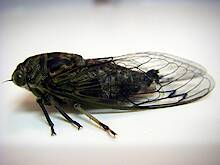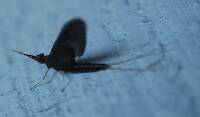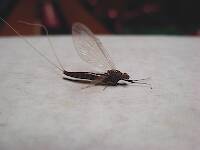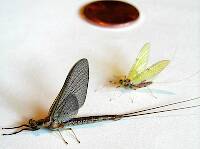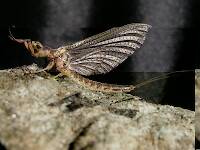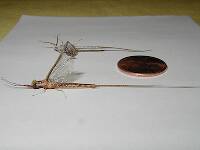
Hex Mayflies
Hexagenia limbata
The famous nocturnal Hex hatch of the Midwest (and a few other lucky locations) stirs to the surface mythically large brown trout that only touch streamers for the rest of the year.
Featured on the forum
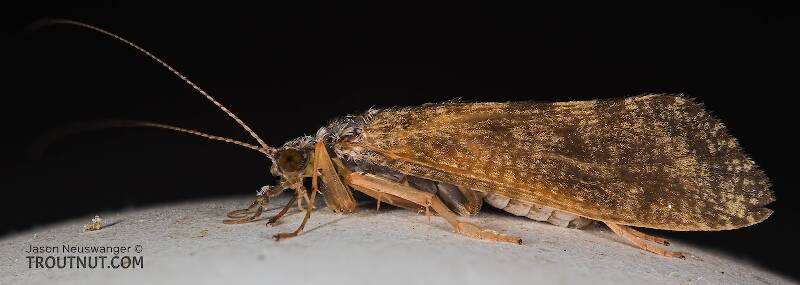

Troutnut is a project started in 2003 by salmonid ecologist Jason "Troutnut" Neuswanger to help anglers and
fly tyers unabashedly embrace the entomological side of the sport. Learn more about Troutnut or
support the project for an enhanced experience here.
DayTripper on Jun 30, 2009June 30th, 2009, 12:58 am EDT
I was hoping someone could help clear up a few Isonychia questions I have-
Last I checked, Isonychia sadleri was lumped in with Isonychia bicolor, correct?
Not that there were any substantial differences between the two, at least as far as physical appearance from an angler's perspective; but I was under the impression that it was sadleri that emerged in the stream, and bicolor that crawled out and emerged on the river bank. With the two species now being lumped together, is it accurate to say that bicolor emerges both in the stream and on the bank? Thanks!
Last I checked, Isonychia sadleri was lumped in with Isonychia bicolor, correct?
Not that there were any substantial differences between the two, at least as far as physical appearance from an angler's perspective; but I was under the impression that it was sadleri that emerged in the stream, and bicolor that crawled out and emerged on the river bank. With the two species now being lumped together, is it accurate to say that bicolor emerges both in the stream and on the bank? Thanks!
GONZO on Jun 30, 2009June 30th, 2009, 3:19 am EDT
Yes and yes, Alex: In addition to sadleri, several other former species (albomanicata, christina, circe, fattigi, harperi, matilda, and pacoleta) are now considered to be synonymous with bicolor. The character of the stream and prevailing water conditions will probably determine the predominant manner of emergence, but individuals are capable of emerging in either way. (Just in case you are interested, a discussion of multi-brooding/voltinism in Isonychia can be found here: http://www.troutnut.com/topic/178 )
DayTripper on Jun 30, 2009June 30th, 2009, 4:05 am EDT
Thanks, Gonzo!
Quick Reply
Related Discussions
Topic
Replies
Last Reply
13
Jul 25, 2014
by Millcreek
by Millcreek
3
Sep 14, 2010
by Jmd123
by Jmd123
0
Jul 3, 2006
by Troutnut
by Troutnut
4
Apr 17, 2009
by GONZO
by GONZO


